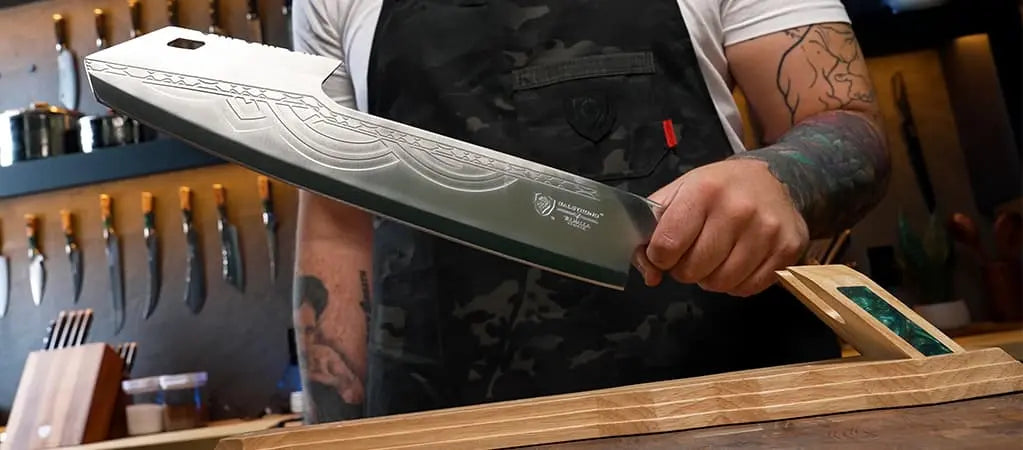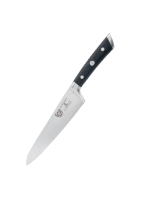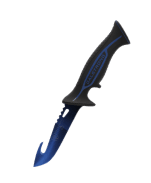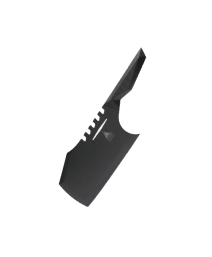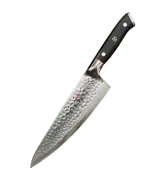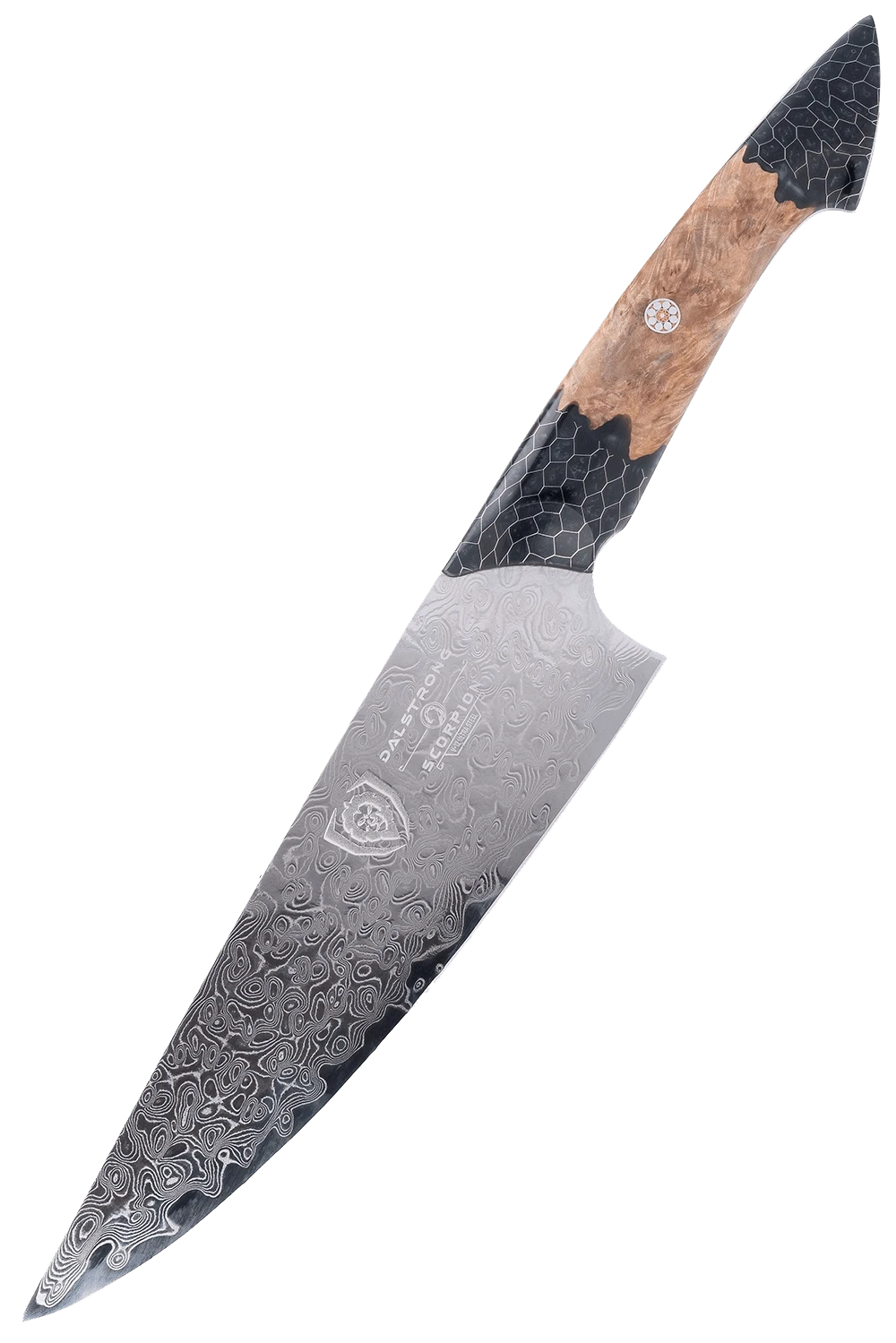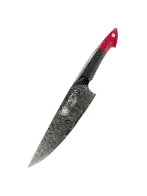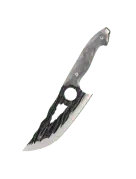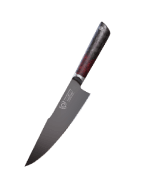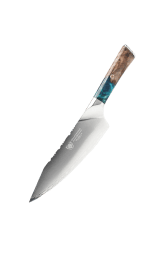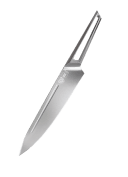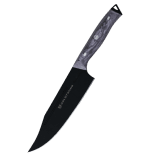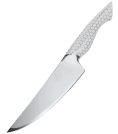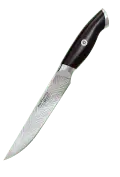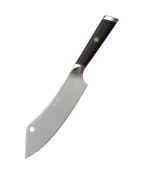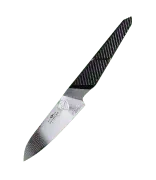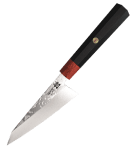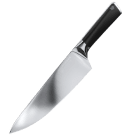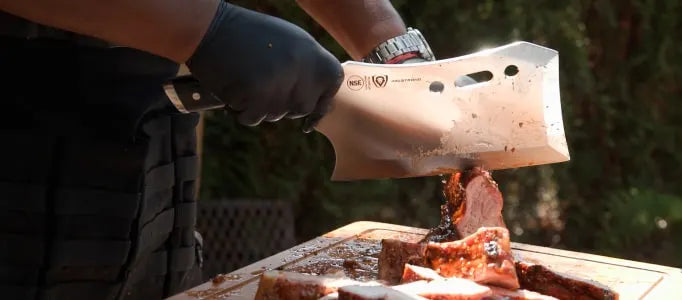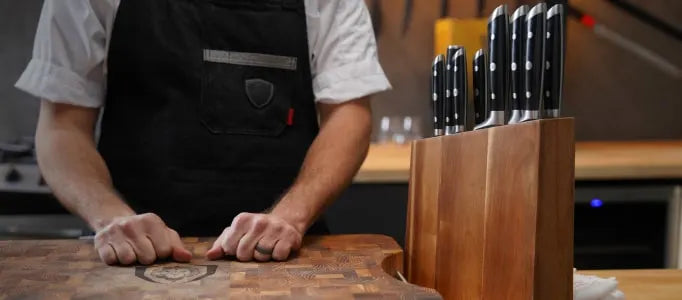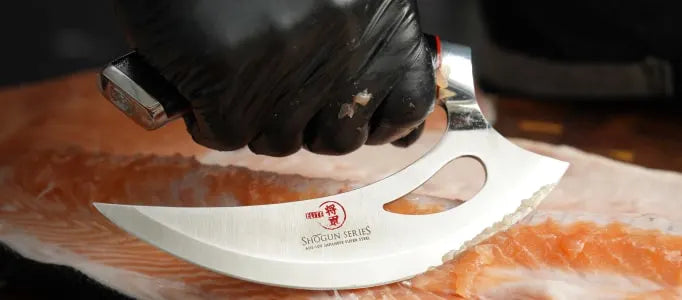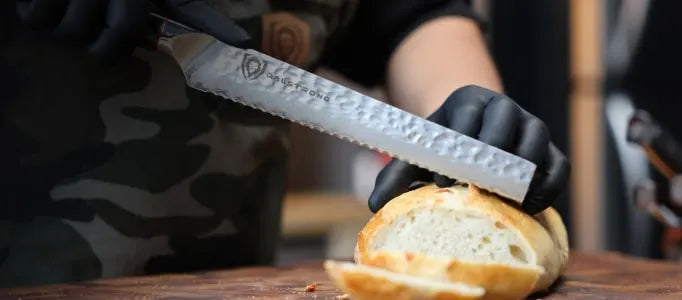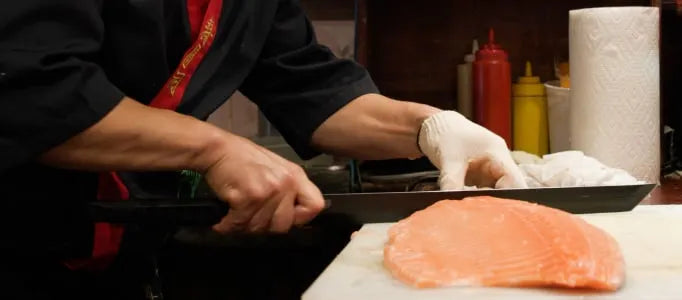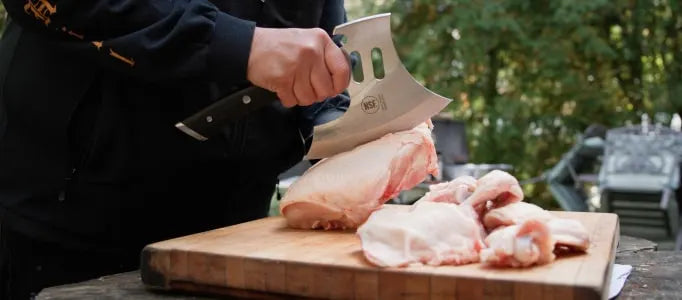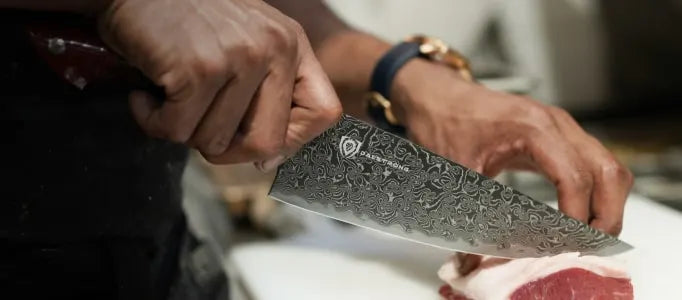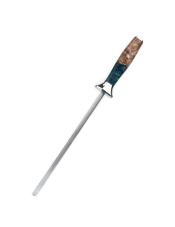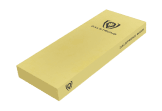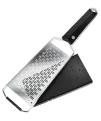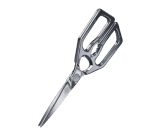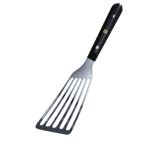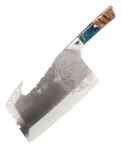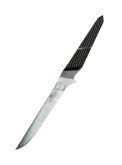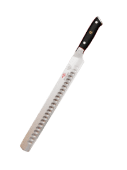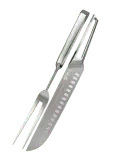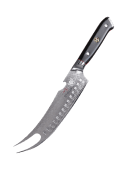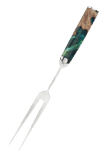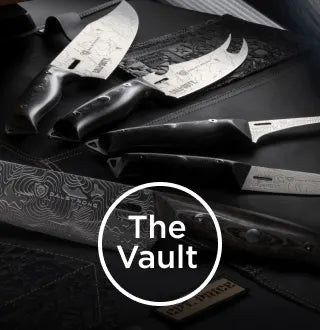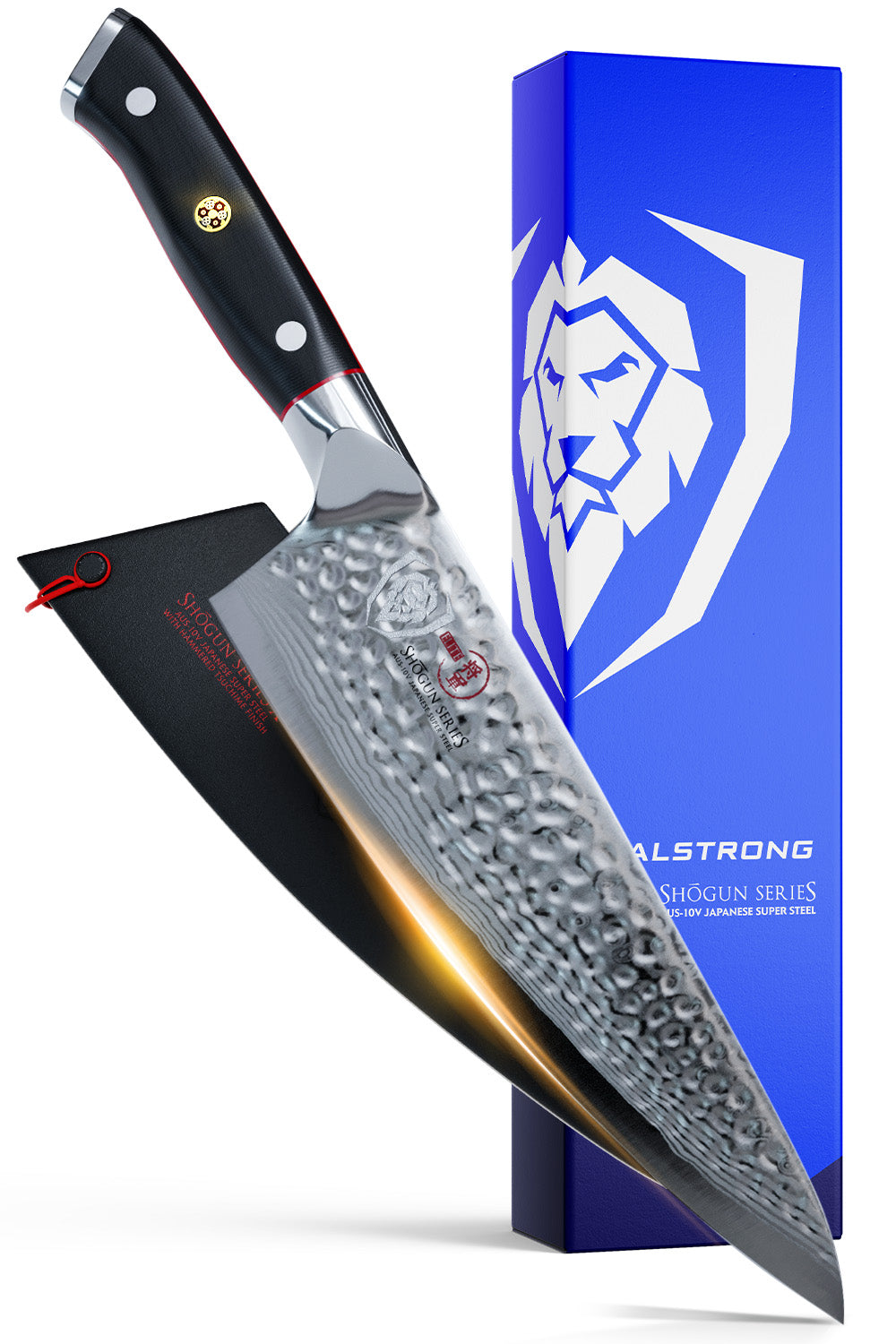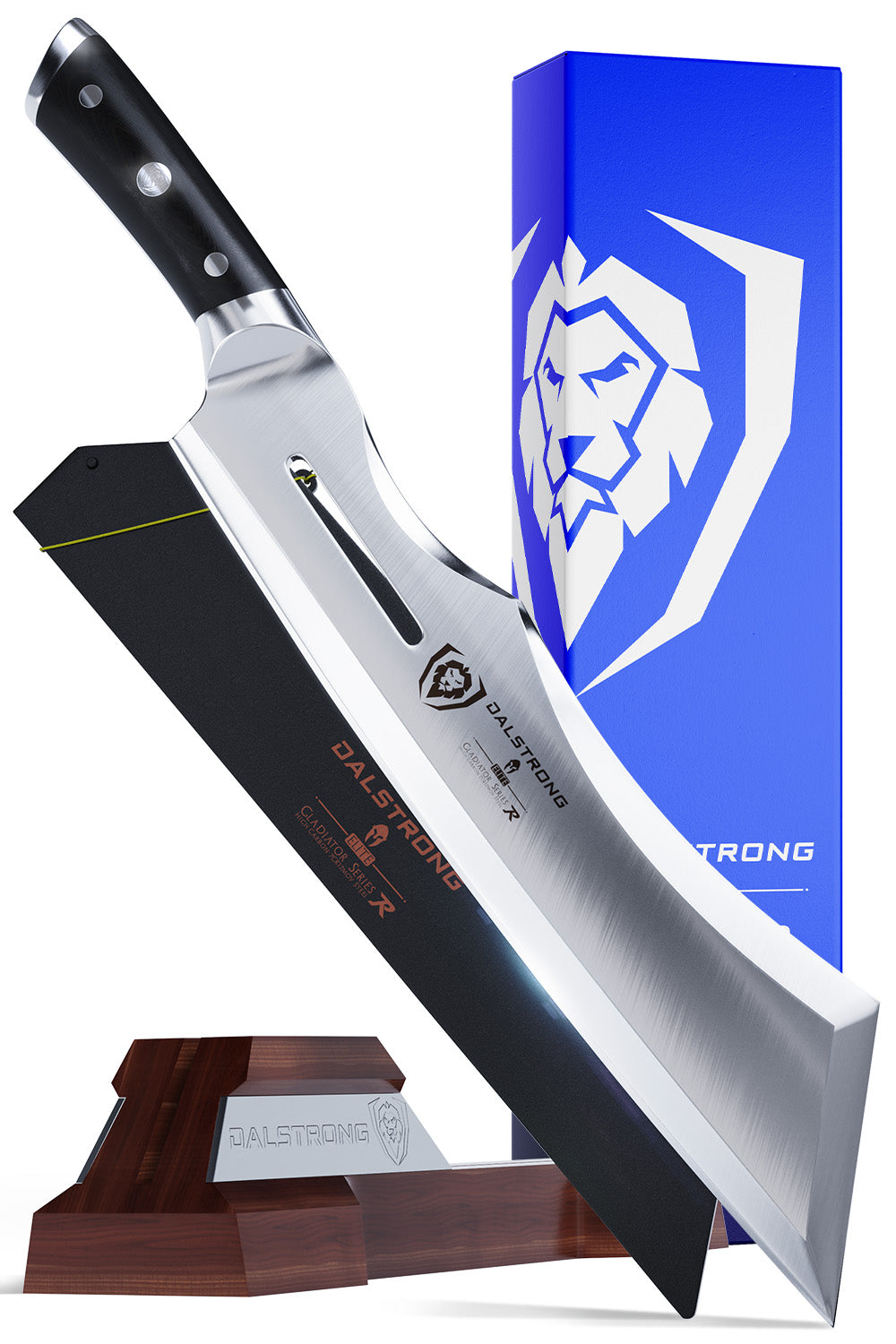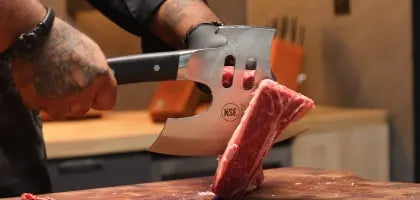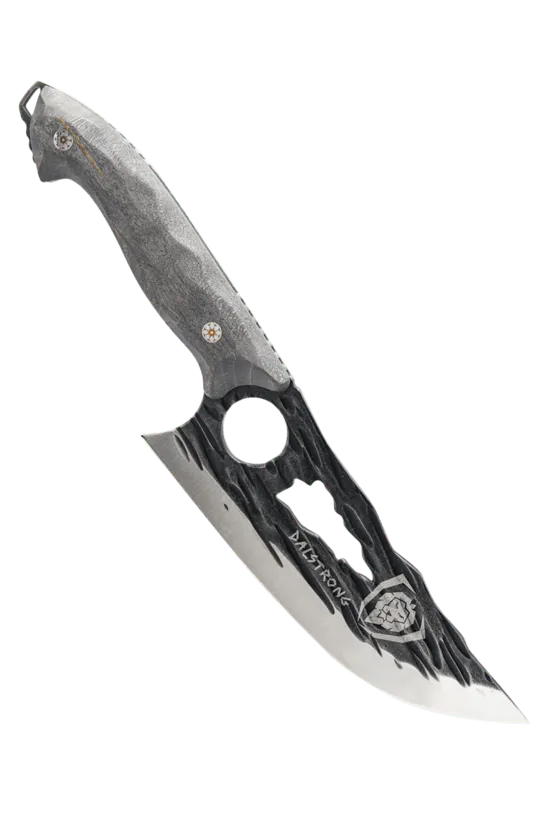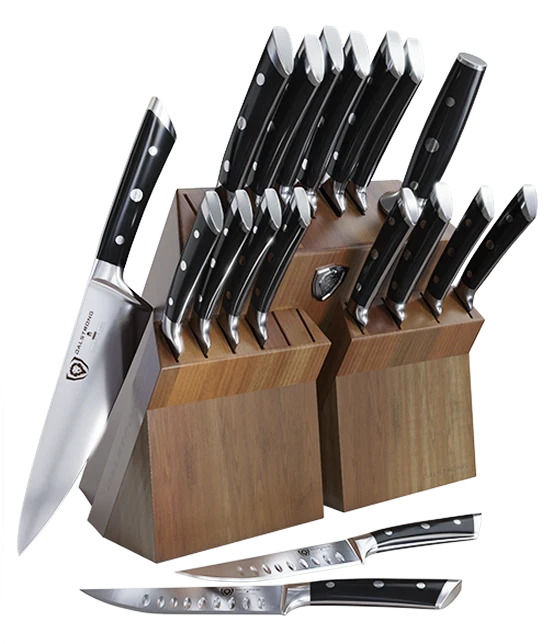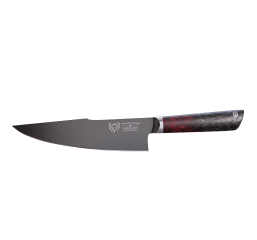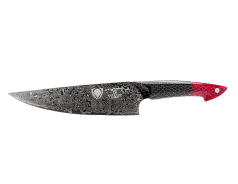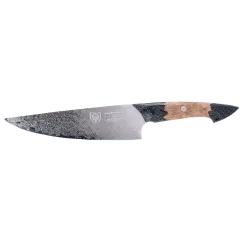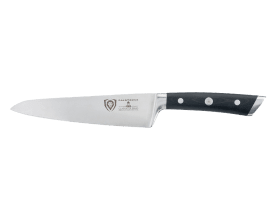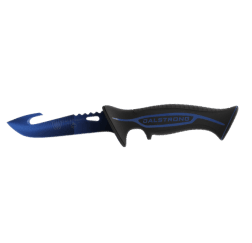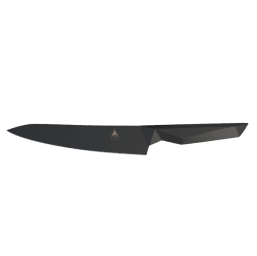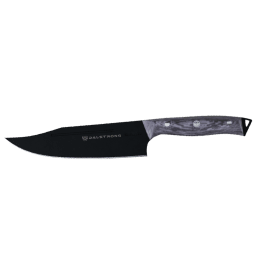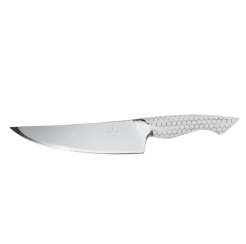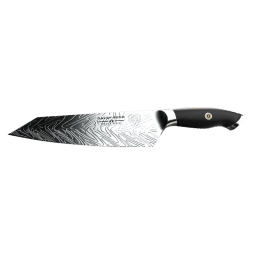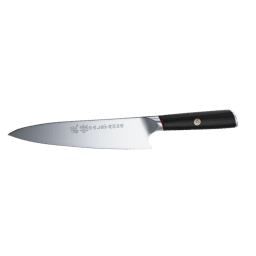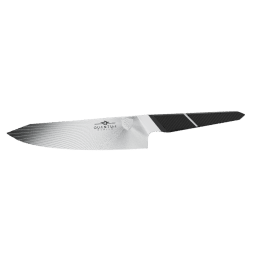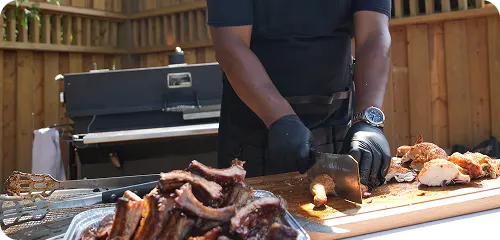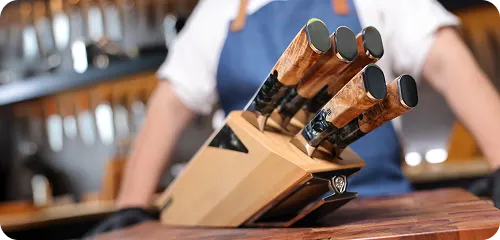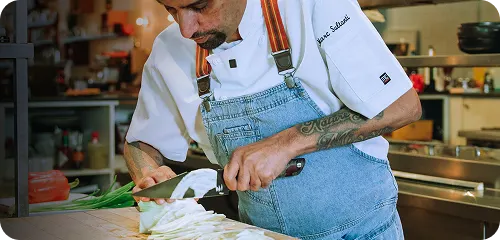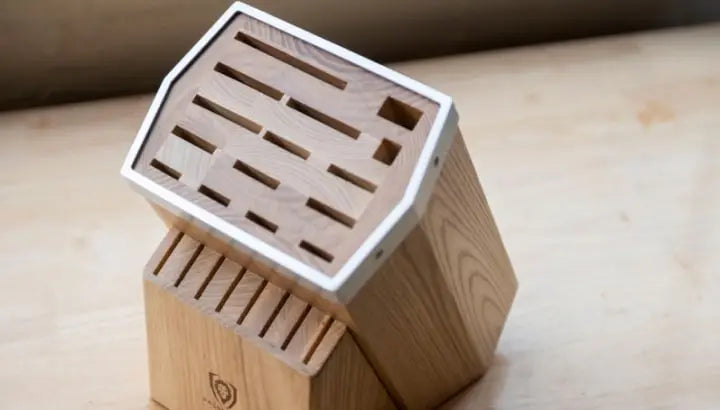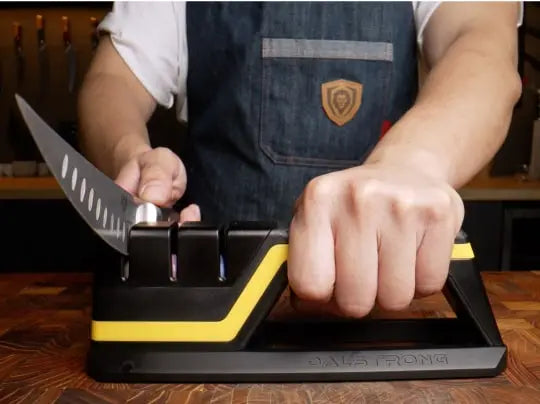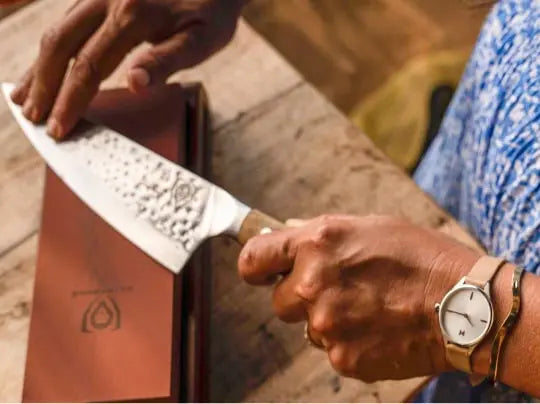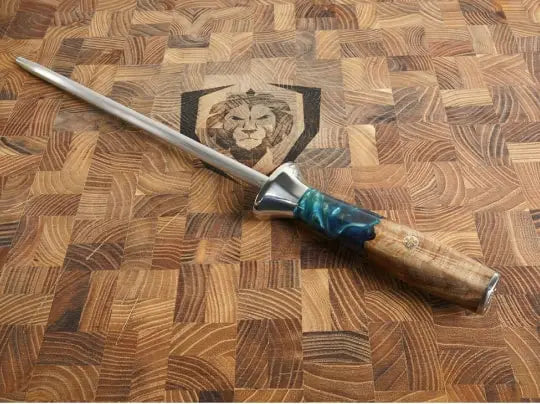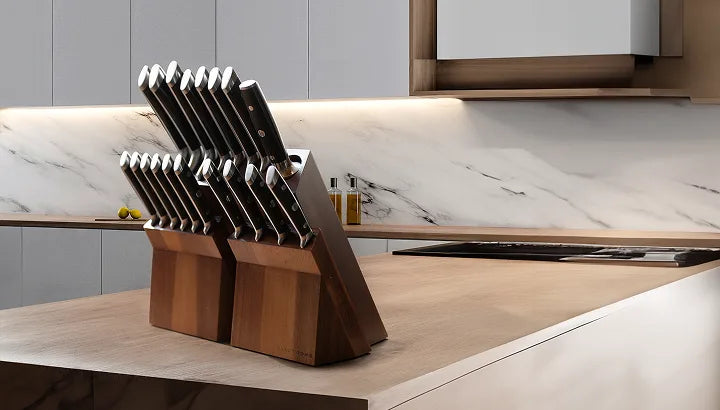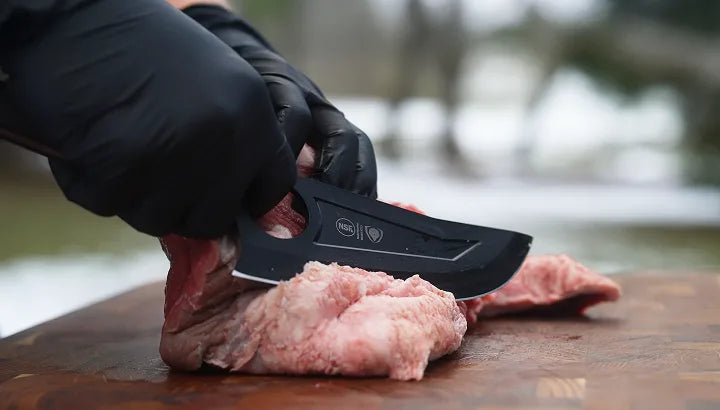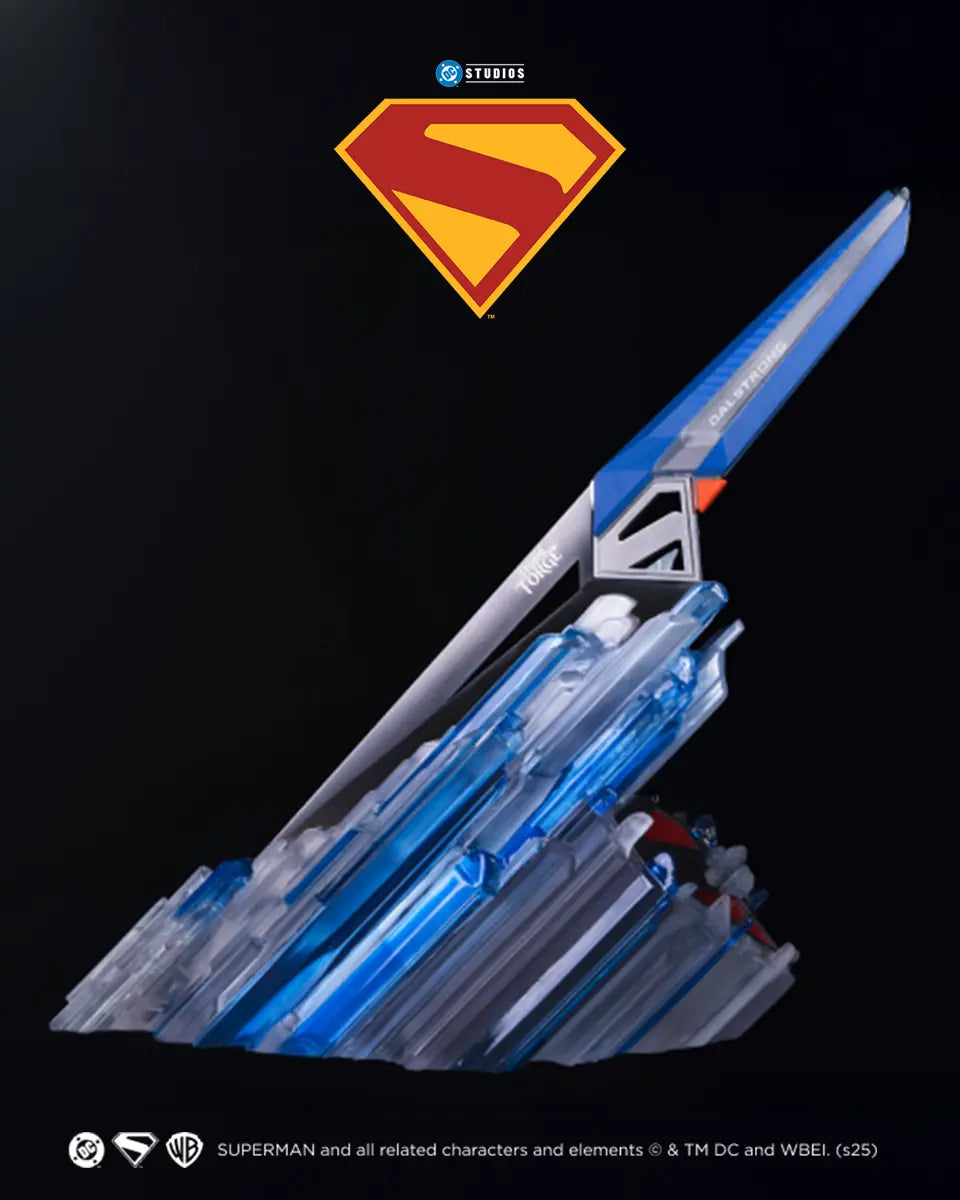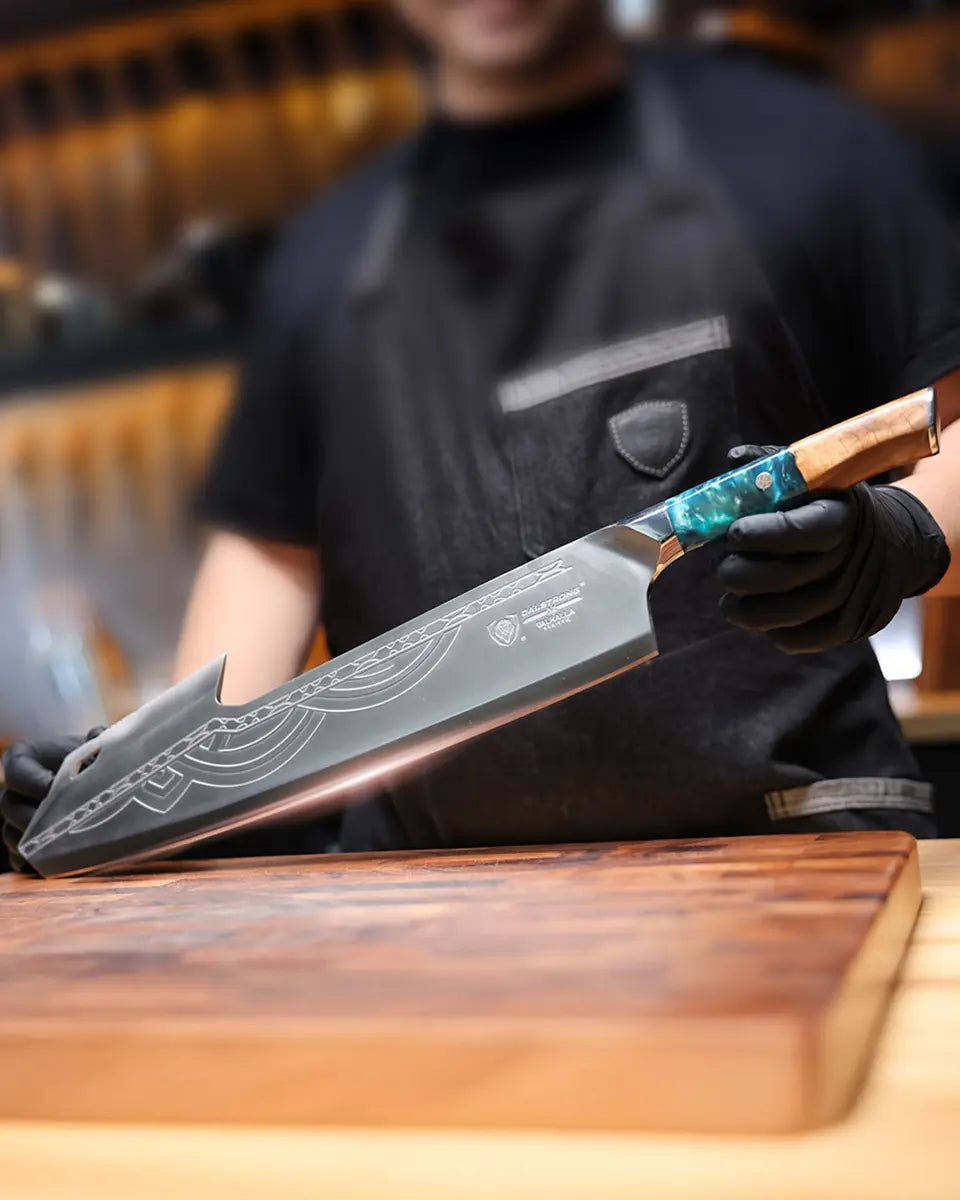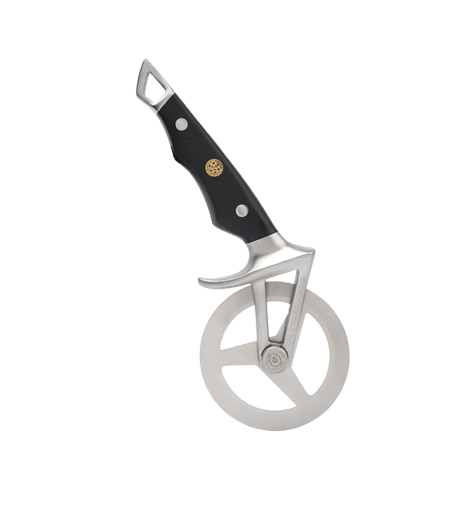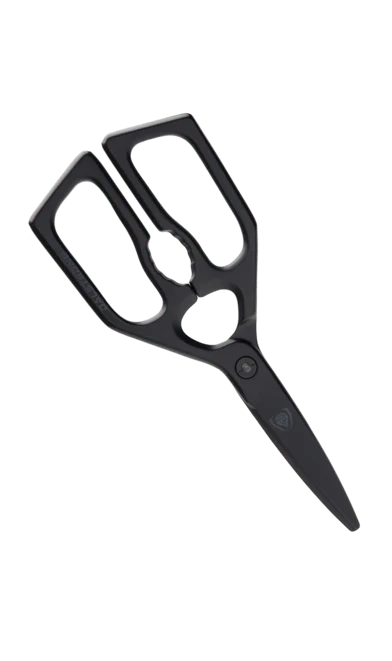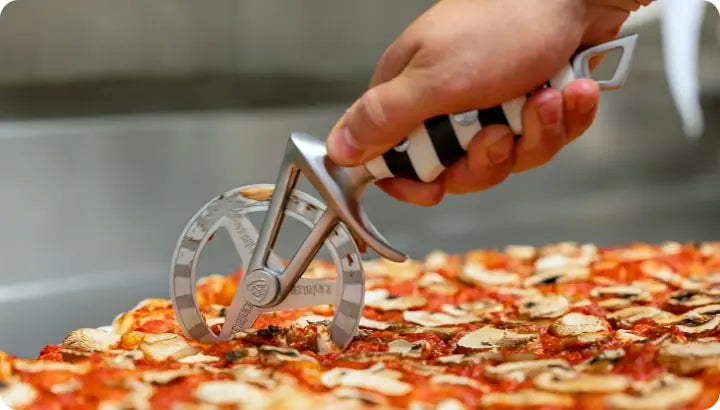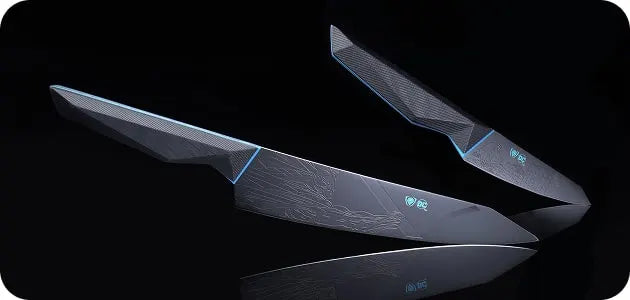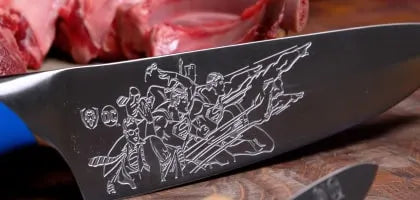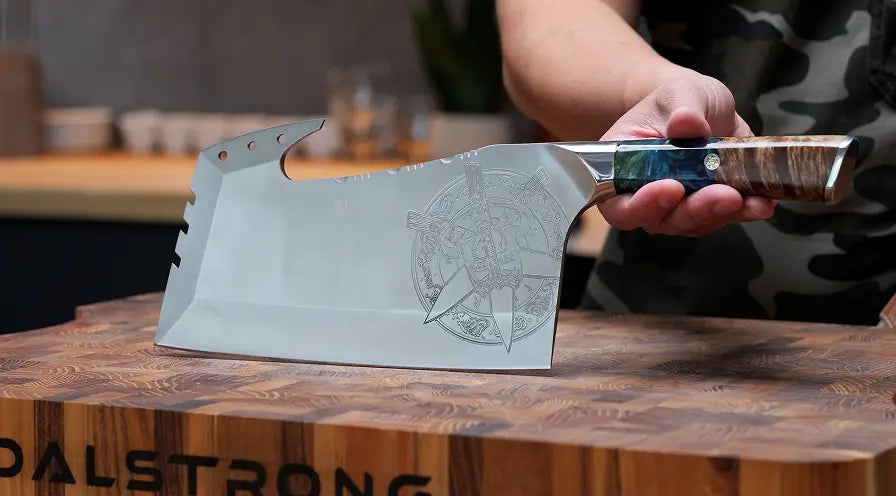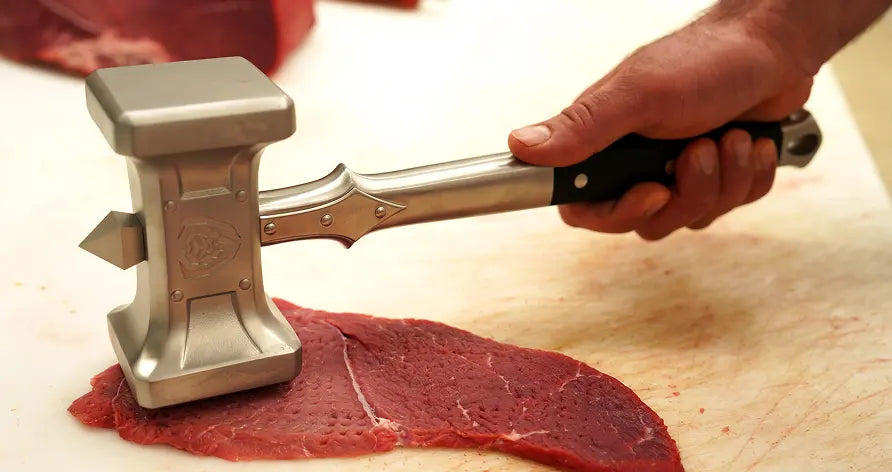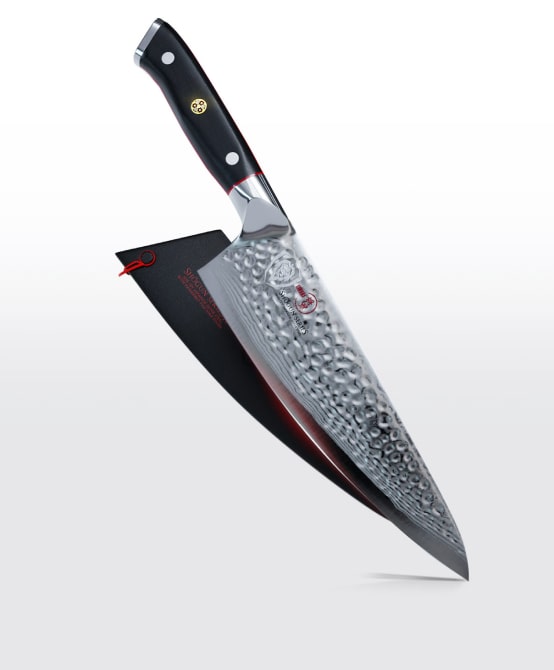 Valhalla Series Slicing & Carving Knife 12"
Valhalla Series Slicing & Carving Knife 12"
Some of our favorite knives:
- Gladiator Series Chef's Knife 8"
- Shogun Series ELITE Paring Knife 3.5"
- Frost Fire Series Bread Knife 8"
- Shadow Black Series Curved Boning Knife 6"
- Gladiator Series Chef's Knife & Cleaver Hybrid 8"
1. What Are The Top Rated Kitchen Knives And Uses
 Valhalla Series Nakiri Knife 7"
Valhalla Series Nakiri Knife 7"
The Classic Chef’s Knife
Let's start with the star of the show: the classic chef's knife. A staple in any kitchen, this versatile kitchen tool is perfect for everything from dicing onions to slicing butternut squash. The Dalstrong 8-inch chef's knife is a favorite among many chefs for its balance, sharp blade, and comfortable handle. It’s the kind of knife that makes you feel like a pro chef even if you're just making a sandwich. With its classic design, it’s no wonder this knife often ranks as the top chef knife overall in many kitchen knife sets.
If you're looking for something with a bit more flair, the Dalstrong's Shogun series offers a sleek design and a slightly heavier feel. It’s no surprise it’s a hit with both home cooks and tested chefs alike. And Dalstrong's gorgeous Shogun Series X Chef's Knife is a hit with everyone lucky enough to use it. Known for its razor-sharp edges and lightweight design, this knife proves you don’t need to break the bank to get a top-rated kitchen knife. It’s a classic chef’s knife that’s comfortable to hold and easy to maneuver, making it a favorite among tested chefs and home cooks.
Santoku Knife
For those who prefer a more compact, precise tool, the 7-inch Santoku knife is a great option. With its hollow edge and Japanese craftsmanship, this knife excels in making thin slices and precise cuts. Think of it as the sushi chef's secret weapon. Dalstrong and some other brands like Shun Classic and Global Classic have highly rated Santoku knives that have sharp edges that make cutting through vegetables feel like slicing through butter.
Paring Knife
Don't underestimate the power of a good paring knife. Perfect for peeling, trimming, and making those intricate cuts, a paring knife is a must-have in any kitchen. Dalstrong's Gladiator Series Bird's Beak paring knife is the ultimate choice for precision cuts. It’s small but mighty, perfect for tasks that require a bit more finesse than a chef’s knife.
Bread Knife
A serrated knife is essential for slicing through crusty bread without squashing it. Dalstrong bread knives and the Mercer Culinary Renaissance bread knife is a top contender, known for its sharp serrated blade and comfortable grip. This knife glides through bread like a dream, making it an essential addition to any kitchen knife set. Plus, it’s great for slicing tomatoes and other soft fruits without turning them into mush.
Utility Knife
Falling somewhere between a chef's knife and a paring knife, the utility knife is ideal for tasks that require precision but are too big for a paring knife. Tools like the Henckels Classic 6-inch utility knife is a versatile choice for your kitchen. It’s the jack-of-all-trades in the knife world, perfect for slicing sandwiches, cutting small fruits, and tackling any other medium-sized task you throw its way.
When it comes to kitchen knives, it's all about finding the right tool for the job. Whether you're a seasoned chef or just starting out, having a selection of high-quality knives can make all the difference in your cooking experience. So go ahead, treat yourself to a classic chef’s knife or a Santoku knife, and watch your culinary skills soar!
2. Popular Steel Used For Kitchen Knives
 Shadow Black Series Chef's Knife 8"
Shadow Black Series Chef's Knife 8"
Here’s a rundown of the most popular types of steel used in top-rated kitchen knives and why they matter.
Carbon Steel
These blades are high-performance but requiring a bit of extra care. Carbon steel knives are beloved for their sharpness and ease of sharpening. You can get them razor-sharp, and they’ll stay that way with a little bit of love and attention. Take the Mac Professional, for instance. It’s a carbon steel knife that’s been winning over chefs everywhere for its precision and reliability.
However, owning a carbon steel knife means you’ve got to take care of it. They can rust and stain if you don’t dry them immediately after washing. But if you’re up for the task, a carbon steel knife will reward you with unparalleled sharpness. A quick paper test will show you just how sharp these can get.
Stainless Steel
Next, we have stainless steel, the workhorse of the kitchen knife world. These blades are popular for their resistance to rust and stains, making them easier to maintain. Brands like Dalstrong use high-quality stainless steel to produce sharp, durable blades that are also comfortable to hold.
Stainless steel knives are perfect for those who want a reliable kitchen tool without the high maintenance.
German Steel
Now, let’s talk about the tank-like German-style chefs knives. Known for their robustness and balance, these knives often feature a curved blade for a rocking motion, making chopping and slicing a breeze. Think of them as the sturdy, reliable workhorses of the knife world.
It’s a knife that can handle just about anything you throw at it, from dicing onions to chopping through a butternut squash. If you like a knife with some weight and a solid feel, a German-style chef’s knife is the way to go.
Japanese Steel
 Shogun Series Paring Knife 3.5"
Shogun Series Paring Knife 3.5"
Lastly, we have Japanese steel, often considered the samurai of the kitchen knife world. Japanese knives, like those from Shun and Mac Knife, typically feature harder steel that can be sharpened to a finer edge. They’re perfect for precise, clean cuts and are often favored by professional chefs and home cooks who appreciate a sharp blade.
These knives are known for their lightweight feel and incredible sharpness. The 7-inch Santoku knife, for example, is a Japanese chefs knife that excels in making thin slices and precise cuts. If you prefer a knife that feels light and nimble in your hand, a Japanese knife might just become your new favorite.
Japanese knives also tend to have a more refined aesthetic, with many featuring beautiful, intricate designs on the blades. However, because of their harder steel, they can be more brittle and require careful handling and sharpening.
Brands like Dalstrong use both types of steel, choosing the one that best fits the knife they're making. This opens them up to more possibilities when it comes to crafting innovative and unique pieces.
Personal Preferences and Knife Feel
When it comes to choosing the right knife, it really boils down to personal preferences and knife feel. Some people love the weight and balance of a German-style chef’s knife, while others prefer the nimbleness of a Japanese knife.
A good way to test this is by trying out different knives and seeing which one feels best in your hand. Pay attention to the pinch grip, how comfortable it is to hold, and how the knife feels as you use it.
Affordable Options and Professional Picks
For those on a budget, there are affordable Japanese options that don’t skimp on quality. The Global Classic chefs knife and the Victorinox Swiss Classic chefs knife are excellent choices for anyone looking to get high-quality knives without breaking the bank. They pass the paper test with flying colors, proving that you don’t need to spend a fortune to get a great knife.
In professional kitchens, you’ll often find a mix of knives from different regions. A chef might have a German knife for heavy-duty chopping and a Japanese knife for precision work. Brands like Bennetts chefs knife and knife block sets from various manufacturers are common sights. It’s all about finding the right tool for the right job.
3. Craftsmanship And Heritage Behind Top-rated Kitchen Knives
 Night Shark Series Offset Slicing & Carving Knife 10"
Night Shark Series Offset Slicing & Carving Knife 10"
When you pick up a knife, you're not just grabbing a tool; you're holding a piece of history, a product of centuries of craftsmanship and innovation. Let’s take a closer look at the stories behind some of the top-rated kitchen knives and why they’re so beloved.
German Craftsmanship
German knives arelike the reliable, no-nonsense friend you can always count on. Brands like Dalstrong is legendary, and for good reason. These knives are often heavier and more robust, designed for a variety of kitchen tasks.
These knives are built to last, with blades that can handle the toughest of tasks without batting an eye. The blade length and balance are meticulously crafted to ensure a comfortable grip, making them a favorite among both home cooks and pro chefs. If you’ve ever watched a chef effortlessly chop through a mountain of vegetables, chances are they were using a German knife. It’s all about that sturdy, reliable feel – you know, the kind of knife that makes you feel like you can conquer the culinary world.
The German approach to knife making focuses on robustness and durability. These knives are forged from high-carbon stainless steel, which provides a perfect balance of sharpness and strength. Plus, the handles are designed to be comfortable to hold, reducing fatigue during those long cooking sessions.
Japanese Craftsmanship
Now, let’s jet over to Japan, where knives are not just tools but works of art. Japanese knives are renowned for their precision and sharpness, with a focus on perfecting every detail. Brands like Shun are at the forefront, combining traditional techniques with modern innovation.
Japanese-style knives often feature a thinner, sharper blade, making them perfect for tasks that require precision. Take the 7-inch Santoku knife, for example. Its hollow edge allows for cleaner cuts, making it a favorite in test kitchens and among Japanese chefs. If you prefer a lighter, more agile knife, a Japanese knife might just become your go-to.
Japanese knives are also known for their beautiful designs. The blades often feature intricate patterns, and the handles are crafted with aesthetics in mind. It’s not just about functionality; it’s about creating something beautiful that also performs exceptionally well. When you pick up a Japanese chefs knife, you’re holding a piece of art.
Swiss Craftsmanship
And let’s not forget about the Swiss. Victorinox, famous for its Swiss Army knives, also produces top-rated kitchen knives. The Victorinox Fibrox and Swiss Classic lines are known for their durability and affordability, making them a favorite among home cooks and professional chefs alike.
Swiss knives are all about practicality. They’re designed to be durable, easy to maintain, and affordable without compromising on quality. The Swiss Classic chefs knife is a great example of this – it’s sharp, reliable, and comfortable to use, making it a fantastic addition to any kitchen knife block set.
Victorinox knives are often made from high-carbon stainless steel, which provides excellent edge retention and durability. They’re designed to be comfortable to hold, with ergonomic handles that reduce fatigue. If you’re looking for a reliable, no-fuss knife that delivers consistent performance, a Swiss knife is a great choice.
Heritage and Innovation
What sets these knives apart isn’t just the quality of the steel or the sharpness of the blade; it’s the heritage and innovation behind each brand. Whether it’s the centuries-old traditions of German knife making, the meticulous precision of Japanese craftsmanship, or the practical innovation of Swiss design, each knife tells a story.
In the end, it’s about finding the knife that feels right for you. Do you prefer the heft and durability of a German knife, the precision and beauty of a Japanese knife, or the practicality and affordability of a Swiss knife? Each has its own unique charm and functionality, and the best knife is the one that fits your personal preferences and cooking style.
4. The Importance Of Knife Care And Maintenance
A knife is only as good as its edge. And an edge is only as good as the care you give it. So, grab your favorite chefs knife and let’s discuss knife care and maintenance.
Sharpening Your Knives
First things first, keeping your knives sharp is essential for both safety and efficiency. A dull knife is more dangerous than a sharp one because it requires more force to cut, increasing the risk of slipping. Imagine trying to slice through a tomato with a butter knife -- disaster waiting to happen, right?
To keep those blades in fighting shape, invest in a good knife sharpener or, better yet, take your knives to be professionally sharpened regularly. Professional hollow edge knives, like many Japanese chefs knives, require a bit of special care to maintain their sharpness.
Read about Honing vs Sharpening: What's the Difference?, here.
Cleaning and Storage
Next up, let’s chat about cleaning and storage. Always, and I mean always, hand wash your knives. Tossing them in the dishwasher is a surefire way to dull the blades and potentially damage the handles. Give them a gentle scrub, dry them immediately to prevent rust and stains, and you’re good to go.
When it comes to storage, options abound. A knife block set is a classic choice, keeping your knives organized and within easy reach. Magnetic strips are another great option, especially if you’re short on counter space. And let’s not forget knife guards, perfect for protecting the blades if you prefer to store your knives in a drawer.
Regular Maintenance
Regular maintenance is key to keeping your knives in prime condition. This is where honing steel comes into play. Unlike sharpening, which removes material from the blade to create a new edge, honing realigns the existing edge. Think of it as a quick tune-up for your knife.
Using a honing steel might seem a bit intimidating at first, but with a little practice, it becomes second nature. Hold the steel vertically, grip it with one hand, and slide the knife down at a slight angle. Do this a few times on each side, and your knife will cut smoothly every time.
The Feel of a Well-Maintained Knife
One of the best feelings in the kitchen is using a well-maintained knife. The knife feel, or how a knife performs and responds in your hand, is vastly improved when it’s properly cared for. A sharp knife with a good pinch grip feels comfortable to hold and makes every cutting task a breeze.
Even budget chefs knives can perform like high-end blades with proper maintenance. It’s all about the care you put into them. Your knife block set will stay looking sharp (pun intended), and your knives will be ready to tackle any recipe you throw at them.
Chef Knife Tests
If you’re unsure about your sharpening skills, don’t worry. There are plenty of resources and chef knife tests available online to guide you. From the paper test (where a sharp knife should slice through paper effortlessly) to tomato slicing (a sharp knife should glide through a tomato without squishing it), these tests can help you gauge whether your knives are in good condition.
5. Top Rated Dalstrong Knives
1. Gladiator Series Chef's Knife 8"
This NSF-certified powerhouse is the tool you need for all your cooking adventures. Razor sharp, precise, and built to last with ultra-durable German steel. Plus, it’s got a tall blade that gives you plenty of knuckle clearance, making prep work a breeze. And the handle is military-grade G10, so you know it’s going to stick around for the long haul.
PROS:
- Made from tough, high-carbon German steel, this knife is built to last.
- The full-tang handle, crafted from G10 Garolite, gives you balance and safety.
- Sharpened to 16-18° per side, the blade is super sharp yet resilient.
- The ergonomic handle is comfortable to hold and easy to maneuver.
CONS:
- It’s on the heavier side, which might take some getting used to.
- Its timeless look might feel a little muted for those looking for something flashier.
2. Shogun Series ELITE Paring Knife 3.5"
This 3.5-inch wonder is like a little ninja in your kitchen, perfect for those precision tasks where a chef’s knife might be overkill. It's small, sharp, and incredibly versatile – a must-have for any serious cook.
PROS:
- The blade is made from Aus10V Japanese Super Steel, so it’s super strong and razor-sharp.
- It features a stunning 66-layer Tsunami Rose Damascus pattern that’s as beautiful as it is durable.
- With an edge rating of 62+ HRC, it stays sharp longer, meaning less time spent sharpening.
- The hand-polished spine is designed for a comfortable pinch grip, making it easy to handle.
CONS:
- The intricate Damascus pattern might require a bit more careful cleaning to maintain
3. Frost Fire Series Bread Knife 8"
This 8-inch tool isn’t just for bread; it’s perfect for cakes, pastries, melons, and anything else that needs a gentle yet effective touch. With its scalpel-sharp serrated teeth, this knife slices through delicate foods without crushing or mashing. Plus, it looks cool as ice and performs with fiery precision. Perfect for the modern chef who wants a knife that’s as stylish as it is functional.
PROS:
- Made from 7-layer high-carbon, high-chromium 10CR15MOV steel, it’s both durable and incredibly sharp.
- The serrated blade stays sharp for ages, effortlessly slicing through crusty bread and delicate pastries.
- The sandblast finish gives it a frosted look and enhances its non-stick properties.
- The lightweight construction and ergonomic handle make it comfortable to use and easy to control.
CONS:
- Its specialized nature means it might not see as much use as a more versatile knife.
- Not everyone is a fan of the honeycomb pattern.
4. Shadow Black Series Curved Boning Knife 6"
Whether you're deboning a chicken, filleting a fish, or trimming a brisket, this knife's got your back. It's got just the right amount of flex to glide through sinew, fat, and muscle, and it's sleek, stylish design is a real showstopper. Perfect for chefs, butchers, and home cooks who take their meat seriously.
PROS:
- The blade is crafted from high-carbon 7CR17MOV-X steel, making it ultra-sharp and wear-resistant.
- It features a non-reflective titanium-nitride coating that adds corrosion resistance and enhances non-stick properties.
- The ergonomic fiber-resin G10 handle is nearly impervious to heat, cold, and moisture, ensuring a firm grip.
- The knife comes with a matching black sheath, making it easy to store and transport.
CONS:
- Its aggressive design might not appeal to everyone.
- The specialized blade might require more frequent sharpening compared to general-purpose knives.
5. Gladiator Series Chef's Knife & Cleaver Hybrid 8"
This thing is perfect if you’re really into BBQ or just love prepping meat. It’s a cool mix between a chef’s knife and a cleaver. The curved blade slices through meat like butter, and the heavy front lets you chop through bones and tougher cuts easily.
PROS:
- It’s made from high-carbon German steel, so it’s super durable and stays sharp.
- The blade is sharpened to 16-18° per side, making it both super sharp and resilient.
- The G10 Garolite handle is really comfortable to hold, even if you’re chopping for a while.
- You can use it for slicing and chopping, which makes it super versatile in the kitchen.
CONS:
- If you don’t prep a lot of meat, you might not use it as much as a regular chef’s knife
6. Frequently Asked Questions
What is the best knife to use in the kitchen?
The best knife to use in the kitchen is often considered to be the classic chef's knife due to its versatility. The Dalstrong 8-inch chef's knife is a top choice, beloved for its balance, sharp edge, and comfortable handle. It can handle a wide range of tasks from chopping vegetables to slicing meat.
What are the top 3 knives?
The top 3 knives that every kitchen should have are: Chef’s Knife: A versatile tool for chopping, slicing, and dicing. Paring Knife: Perfect for peeling and intricate work. Bread Knife: Essential for slicing bread and other baked goods without crushing them.



